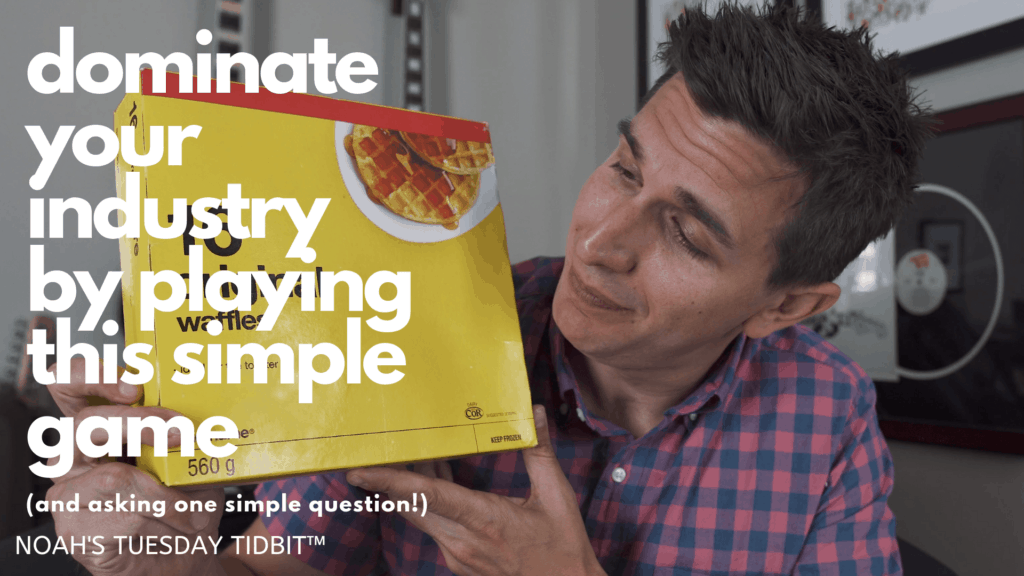Herb Kelleher was the famous CEO of Southwest Airlines.
What I loved about Herb and his management style was that Southwest was one of the few organizations to operate genuinely in line with its core purpose or strategic vision.
And the vision was, “We are the low-cost airline.”
Anything that went beyond that was axed. I remember a speaker once saying, you could always count on Southwest leaving on time. They board everyone as fast as possible and before you know it, you’re barrelling down the runway at 200mph, and Grandma is still trying to close the overhead bin!
In the early days, Kelleher was fanatic about not just beating the turn-around times of his competitors, but obliterating them. This fanatical focus allowed them, in their infancy, to run a 4-plane schedule with just 3 planes.
So that was Southwest. But what about the rest?
Today I want to explain why most organizations aren’t even operating in the same reality and how one low-cost grocery business is putting fear into the eyes of the most significant inexpensive player in the world – Walmart.
For the video version, check the link below.
There’s a little grocery store in Canada called No Frills which means no-frills about the experience. Everything comes in this basic yellow packaging, and everything is cheap.
But one thing about this store always excited me as a kid.
To get the grocery cart, you had to deposit a quarter and to get your quarter back you had to return the cart, lock it up and retrieve your quarter. As a kid, my mom always let me keep the quarter.
A lot of stores tried this, and the practice seemed to fizzle out, but one grocery store is bringing is back, and they’re taking that and other unique methods to the next level.
Aldi, the German grocer which is invading the US with a vengeance charges its customers .25 cents for the shopping cart.
Then, you have to bag your own groceries and check out yourself.
They’re running entire grocery stores with only 3-5 people in the store at any given time, and only 15-20 on the payroll for the entire store.
Think about that.
In my local grocery store, I see over 20 employees by time I make it to the back of the store.
Aldi is brutally efficient, and they’re passing on all the savings to their customers.
By doing this, they’re growing a rabid, loyal following during a time when most stores and trying anything and everything to lure customers in.
Aldi is making their customers do all the work, and the customers love it.
So what does this have to do with Southwest Airlines?
Well, Southwest and Aldi are perfect examples of organizations that are living by their messaging and core values.
They looked at their industries, and asked the question “Where are the bottlenecks?
How could we change things so that we could get much higher performance?”
What if we were able to speed up the checkout process by over 100%?
What if we were able to be 3X faster at getting planes back in the air?
What if we didn’t have to pay our staff to wrangle carts?
This game of “What if” is critical, and critically underused in large companies.
It also happens to be the driving force of innovative startups, and the reason that so many industries get disrupted and destroyed.
What if you considered every employee complaint; every customer complaint; every issue you could imagine that either caused annoyance, or expense, or downright anger, and instead of just assuming it’s a “part of the game”, reinvented that game?
Your Challenge For This Week: Play the What If game.
Look at the most common complaints from your customers over the past 3 months (if you don’t have a way to do this, then you’re already woefully behind!)
What if you changed your business so that complaint was impossible?
What would you have to do differently?
What changes would your customers have to live with?
What would your employees have to do differently?
Examples of this abound.
“What if our taxi customers could see exactly where their cab was while waiting, so they didn’t worry about getting to the airport on time?”
“What if we cut these 6 expense areas that are industry standard, to give our customers a 10-15% discount?”
“What if we increased our price to be the highest in our market? What would our customers demand in return for spending more?”
“What if we could be certain that our salespeople were actually selling?”
“What if we knew that all of our new customers got the same incredible high-touch, value-added experience in the 6 months after signing on?”
